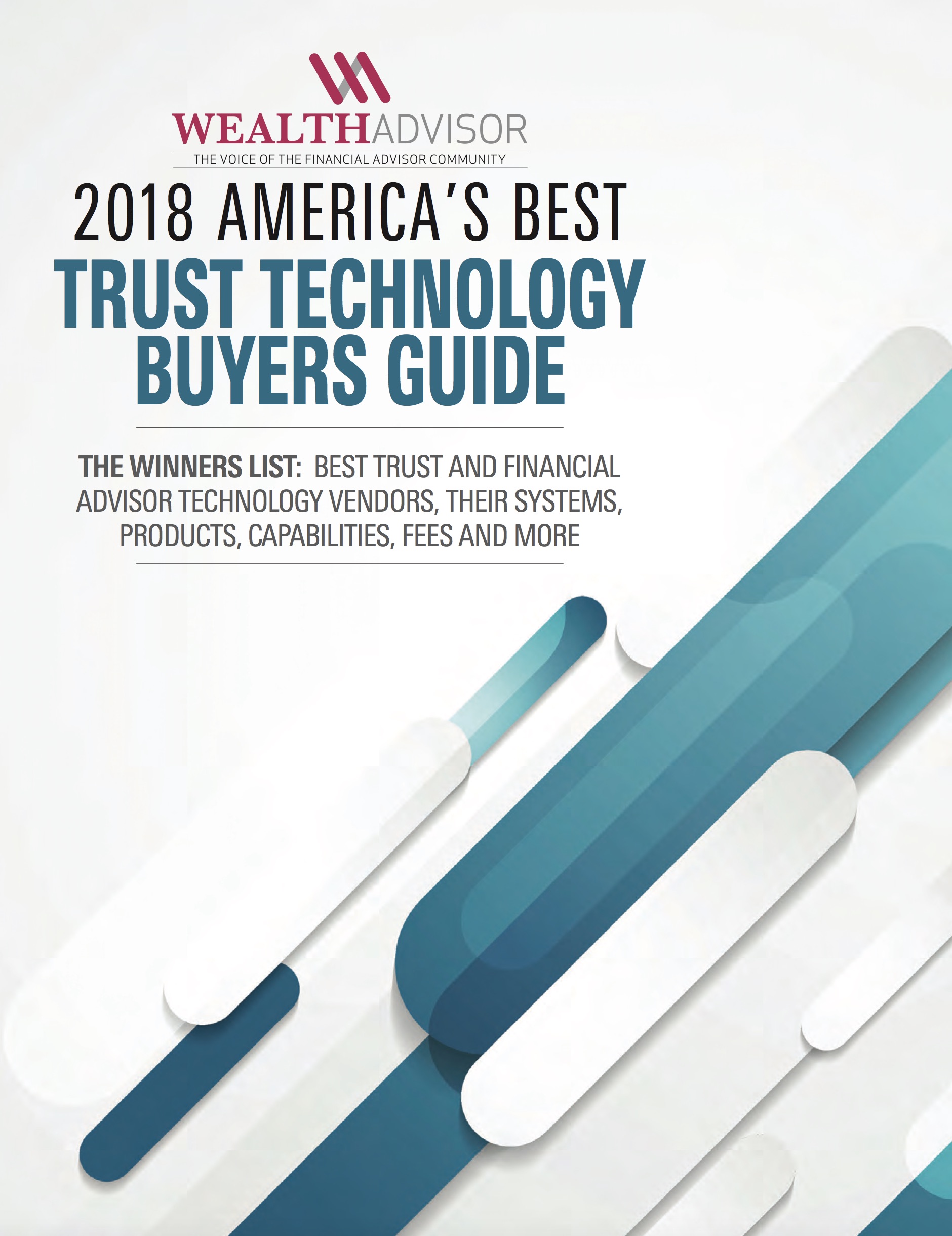
Channel convergence and new investment structures finally give even world-class advisory platforms the strategic puzzle piece that snaps the competitive map into place.

Sometimes to grasp the future of the wealth management industry, you’ve got to pause for a moment to reflect on the outdated assumptions that built the business and no longer really apply. I think it’s time for one of those moments.
If you don’t need the history lecture, the latest edition of our Trust Technology Buyer’s Guide may be more compelling reading. It’s newly expanded, we’ve broadened the focus into new service categories and you can download it HERE.
Maybe you think “trust” technology doesn’t apply to you. That’s what the history lecture is for. For now, let’s just say this might be the last year the guide has “trust” in the title — at the rate the industry is evolving, the distinction between trust and the broader world of wealth is blurring too fast to apply much longer.
Climbing that wall now opens up opportunities for any wealth manager to grow at slower competitors’ expense, pivoting to where the funds are flowing and make your clients happier in the process. Taking your eye off the ball at this stage will create challenges later.
Channel convergence is here
Not so long ago, the banks had a de facto monopoly on structured cash management services for high-net-worth families. Those services operated through trusts or trust-like contractual relationships.
Capturing one of those accounts was effectively winning a license to print money for generations to come. It’s an incredibly sticky business, free from the fickleness that afflicts less comprehensive transactional relationships that begin and end with what’s in the portfolio.
The trust department has been the crown jewel of many banks for years now. Profit margins are resilient and the highly predictable nature of the service cycle — scheduled transactions, long-term investment horizons, little room for human foibles — lends these accounts a quasi-institutional quality.
Private bankers watching in the next department copied the techniques, roping in whole dynasties by doling out cash while making sure in-house talent managed the investments. In some cases that meant allocating the capital to in-house products and capturing a larger overall fee.
Meanwhile pure investment advisors have been evolving along an intersecting path. We all want to lock in client assets for longer periods of time and outmaneuver would-be competitors looking to get a toehold in the family financial landscape.
It’s all about share of wallet and share of overall fees: starve a rival, raise your production, win either way.
Lately one of the easiest ways for investment advisors to achieve that goal is through cultivating trust services. We talk about this all the time. As you might remember, we were originally the “Trust” Advisor until the industry matured to the point where trust and wealth became indistinguishable in the long term.
As editor of the “Wealth” Advisor, I can tell you that converting individual relationships into trust relationships is an extremely compelling competitive strategy. Trust clients are easier to retain, even across a generational asset transfer like the one Baby Boom investors are contemplating now. With the right partnerships, you can do it.
What makes this truly exciting, of course, is that banks have been using these accounts to prospect HNW households away from advisors for decades now. If you’re affiliated with one of those institutions, I don’t need to tell you. You should already be reading the Guide in order to make sure your platform is still at the cutting edge. (DOWNLOAD)
And if you’re an advisor, now’s the time to turn the competitive game around and start carving long-term cash management business away from the private banks.
With the right technological support, you can offer your best clients the seamless top-to-bottom financial freedom they’d get elsewhere. You can pay the bills, write the checks, make sure all the tax deadlines are met.
That means accounting systems that integrate with the portfolio and other services you provide. It’s the kind of capability trust departments have exploited for a long time. You don’t have to become a trust company to take advantage of it — all you really need to do is make space on your platform so you can pivot if and when it makes sense.
Private investment products on demand
Once you have that space, things get really interesting. I probably don’t have to tell you any horror stories about big banks stuffing proprietary products into captive accounts, even though those funds really don’t do anything special beyond rack up fat fees.
The more open your platform is to running a trust-like business, the closer you are to building similar private-label products for your clients — of course, yours will be better than the dog food many institutions provide.
Collective investment funds are the fugitive holy grail for many advisors who’ve grown as far as they can on client service and want to take the business to the next level.
They handle a lot like traditional 40 Act funds, without quite so much red tape and paperwork. In theory anyone running a little outside money could set one up, but again, the process gets a lot easier as your core client systems adapt the architecture of the trust industry.
After all, you generally need to either be a trust company or have the ability to communicate information to a true company partner in order to run one (or a suite) of these funds. Think of it as having a common language.
I’ve seen a few advisors lately who clearly want to run client money in a mutual fund kind of format, possibly in the hope of attracting third-party assets without having to work for the sale. Those people probably aren’t ready for this.
But if you’ve got the assets and want to starve competitors, converting your current portfolios into formal products can be a good move — even if nothing else comes of it, you’re differentiating yourself and getting your name out there as an expert.
And if you’re truly a big wheel, you’re probably already exploring going the conventional 40 Act route where compliance costs are enough of a drag that you need substantial scale to start. Even in that scenario, the collective investment fund route can reduce the burden — provided, again, that you’re a trust company or can talk to one willing to host the fund and ensure compliance.
The bottom line
Let’s face it, money management is changing. We talk almost as much about households as the traditional individual client now. That’s a good thing. Households are less volatile in terms of personality than individuals. They’re more stable, require less effort to retain.
“Trust” systems evolved to work with an ideal client that for all practical purposes moves like a household. Those clients demand a way to manage cash and meet regular lifestyle expenses. These tasks are native to the systems we profile in the Technology Buyer’s Guide. Advisory systems are still catching up, when they even bother to address these areas at all.
The portfolio side is changing even faster. The way previous generations of advisors delivered their advice — picking stocks, making recommendations, client by client — will always have its diehard fans, but new approaches seem better equipped to handle many facets of modern life. Geographically distributed advice, “cloud” advice, “virtual” advice, “robo” advice: these are all ways the industry is grappling with the future and how advisors of tomorrow will earn their living.
I think collective investment funds are part of that landscape. Again, that’s a native capability of the “trust” channel. Advisors who want to explore it need to be open to that world.
And in the meantime, “trust” systems have made huge strides on the portfolio front. These are natively open architecture platforms because they need to account for exotic assets like real estate, private equity, art collections. If you build it, they can deal with it.
The people who make those systems can read the writing on the industry wall just as well as we can. They’re looking to grow across traditional channel barriers, go wherever the assets are. In a few years I doubt we’ll even register the difference.
In that scenario, I want you to be ready to embrace what we now call “trust” in pursuit of the comprehensive service of wealth itself. That means knowing the landscape. And it means at least taking a look at the main players in our guide. (DOWNLOAD)



